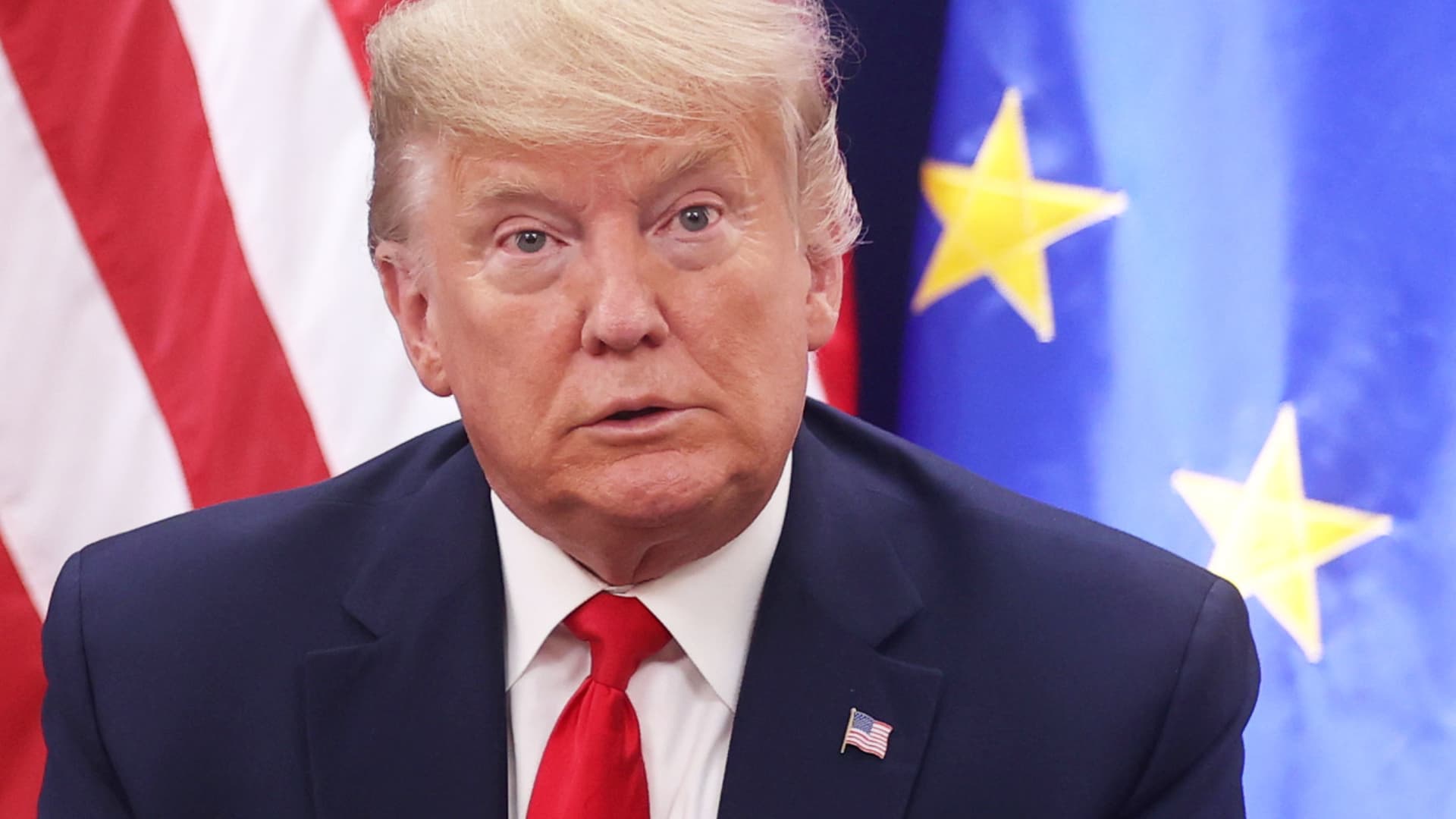European stocks appear to have mostly shrugged off U.S. President Donald Trump’s abrupt threat to impose a 50% tariff on European Union goods, regarding it as a high-stakes negotiating tactic rather than a policy set in stone. It’s one message that could be drawn from the price action in the Stoxx Europe 600 index on Friday, which closed down 1% after initial jitters followed Trump’s post on Truth Social announcing the decision. It’s certainly unlike the 2.5% to 5% losses seen in the days following April 2 “Liberation Day” tariff announcements. .STOXX 5D line Despite the sharp rhetoric, many analysts believe the extreme nature of the 50% tariff threat, its potential economic fallout for the U.S. itself, and the language used by the president point towards a bluff designed to extract concessions. “We believe that this morning’s social media posts about a 50% tariff on the EU are primarily a negotiating tactic,” Ajay Rajadhyaksha, global chairman of research at Barclays, put bluntly in a note to clients. Rajadhyaksha noted the timing, just hours before U.S. and EU trade officials were due to speak, and the use of the word “recommending” rather than “must” as indicative. “We are guessing here – as is everyone else – but we remain of the belief that the 50% tariff on all EU goods on June 1 won’t actually go ahead.” However, the Barclays analyst conceded that tariffs are likely to be higher than expected when the dust settles. Rajadhyaksha had previously forecasted 14-17% average tariffs on U.S. imports. “That assumption might be too optimistic. The EU will not end up with 50%, we think, but it now seems the continent could end up with (say) 20%,” he added. Andrew Kenningham, chief Europe economist at Capital Economics, echoed this sentiment. “President Trump’s threat of a 50% tariff from 1st June may well turn out to be a negotiating tactic and seems very unlikely to be where tariffs settle over the long run,” he said. Kenningham warned, however, that “if it were implemented it could result in a substantial fall in GDP in Germany and potentially even higher in Ireland if pharmaceuticals were included,” estimating a German GDP hit of around 1.7% after three years. “At this stage, we are not inclined to change our working assumption that tariffs on the EU will ultimately settle around 10% but this underlines that there are risks and that the road to an agreement could be rocky.” Tariffs may be too expensive for the U.S. The U.S. imported $606 billion in goods from the EU in 2024, running a goods trade deficit of $236 billion. A 50% tariff, if fully implemented for a year, could cost around $300 billion directly. Using the 2018 trade war with China as a framework, Barclays’ Rajadhyaksha pointed out that “roughly 60% of actual tariffs are paid by the consumers of the tariffing country,” implying a potential $180 billion hit to U.S. consumers. “The US arguably saw this coming in the case of China and decided that it was too high a price to pay; reciprocal tariffs on China collapsed before there was too much damage done,” he explained. “We think it unlikely that the US will be willing to risk a repeat – and this time with its largest trading partner.” Risk of retaliation And unlike America’s trading relationship with China, the U.S. maintains a large services surplus with the EU, amounting to 109 billion euros ($123.5 billion) in 2023. Proceeding with a 50% import tax rate risks retaliatory measures from the European Union, according to Inga Fechner, senior economist at ING. “Despite the aggressive rhetoric, Trump’s tariff threats are often a prelude to negotiation as with China’s weekend deal at the beginning of May (which in fact was more a delay than a real deal),” Fechner pointed out. “While the EU is slower to act, it has prepared a couple of retaliatory tariff measures which are currently scheduled to enter into force on 14 July,” she said. “And if talks truly collapse, expect the EU to reach for its heaviest artillery, such as tighter regulations on US tech firms, delaying licenses or restricting public procurement access and limiting IP rights and investment flows under the Anti-Coercion Instrument (ACI).” In the off chance that the U.S. tariffs went into effect, Fechner has forecasted a 0.6 percentage-point hit to GDP growth which would “bring the eurozone economy close to recession territory.” Salomon Fiedler of Berenberg Economics also sees the move as a pressure tactic. “If actually implemented, such a tariff would result into significant hits to the EU and US economies,” the economist said, adding that the inflationary effect of the tariffs would also make the U.S. central bank more likely to keep interest rates higher than needed. “Given the damage the US would do to itself with this tariff, he will probably not follow through,” Fiedler added. “Still, the threat cements our view that the EU will probably not be able to negotiate away the 10% baseline tariff which Trump imposed on almost all US trade partners.” Jordan Rochester, a fixed income and currency strategist at Mizuho questioned whether Trump’s strategy was merely to ‘”escalate to de-escalate?” Rochester calculated that a 50% reciprocal tariff, excluding currently exempt items like pharma and semiconductors, would mean a “25% effective rate for the EU.” He added that “markets and EU policy makers will hope this is a move by Trump to unlock trade talks and not a permanent situation.”





